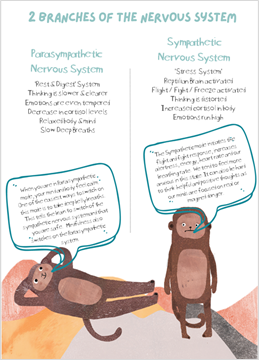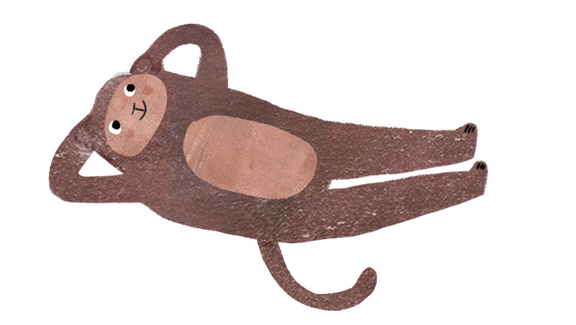|
The Autonomic Nervous System is our body’s automatic control mechanism for a wide variety of bodily functions. It regulates our heart rate, digestion, respiratory rate (when we are not trying to change it), pupillary dilation, urination, and sexual arousal. This is also the system that activates and deactivates – our fight, flight, freeze or shut down response. All these bodily functions operate almost entirely unconsciously.
Our Automatic Nervous System can be divided into two areas – the sympathetic and the parasympathetic. The sympathetic nervous system known as the ‘Stress System’ initiates the flight and fight response, increases alertness, energy, blood pressure, heart rate and our breathing rate. The Parasympathetic nervous system which can also be called the ‘Rest and Digest’ system, decreases our alertness, blood pressure and our heart rate. This system also helps our body to digest food, calm us down and relax the body. Some people may describe the sympathetic system as the accelerator of the body and the parasympathetic as the brake. What does this have to do with Mindfulness and Meditation? Research shows that meditation soothes the nerves in our body. The sympathetic nervous system is greatly affected by meditation as it reduces the effects of anxiety, tension, fatigue, and stress. The Parasympathetic nervous system is activated when we practice Mindfulness as it slows down our heart rate, breathing rate and blood pressure. We can spend our whole day in sympathetic arousal, feeling like we have no capacity to switch this off, being stuck in this spiralling stress cycle. If this is our day-to-day way of operating, we will end up with an overactivation of the SNS which can lead to a general and prolonged state of SNS dominance. Mindfulness activates the Parasympathetic nervous system in many ways. Firstly, when we are focused just on the present and usually just on one thing, it helps to limit activity in the brain’s neural network, the Default Mode Network in the brain, where our brains wander and tend to think of worries, past and future. The brain loves to think of and ‘go to’ to any problems or worries we have because of our ‘negativity bias’. Secondly when we focus on our senses, the body and often the breath, this usually slows down our breathing. When we slow down our breathing, we give messages to the brain that it is safe to relax which in turn turns off the sympathetic flight or fight system. The more we practice being Mindful, the more we train the brain and body to switch off the Sympathetic nervous system and to switch into the Parasympathetic Nervous System. This is immensely powerful and has a huge impact on the quality of our lives. According to the world-famous author of Minding the Body, Mending the Mind, Dr. Borysenko, meditation teaches us just how important it is to regularly activate the body’s natural "relaxation response" – training our minds through meditation so that stress responses simply can’t take over, perpetually maintaining our mental/emotional health and general well-being. Deep breathing and the Parasympathetic nervous system Although nearly all of the PNS system is unconscious and operates automatically, we can change the activation of the SNS to the PNS simply with our breath. This is one important function we do have control over! All we need is 3 deep breaths - three deep ‘in’ breaths and three deep ‘out’ breaths. The inhale breath stimulates our sympathetic nervous system which increases our heart rate. The out breath stimulates the parasympathetic nervous system, decreasing our heart rate. So, what we are aiming for is to have more of the parasympathetic system working than the sympathetic which is why we try to extend the exhale. This affects what is called the Heart Rate Variability.
6 Comments
|
|
PEACEFUL KIDS
|
© Wellbeing For Kids Pty. Ltd. All rights reserved. Suite 159 179 Queens Parade Clifton Hill VIC 3068 Australia [email protected] |

 RSS Feed
RSS Feed
